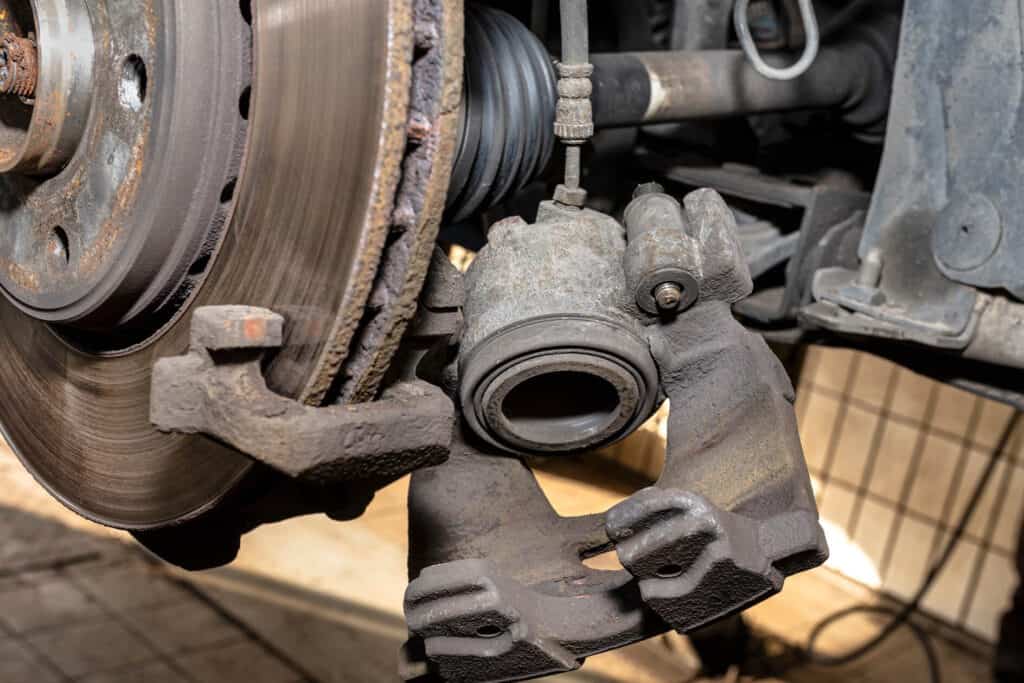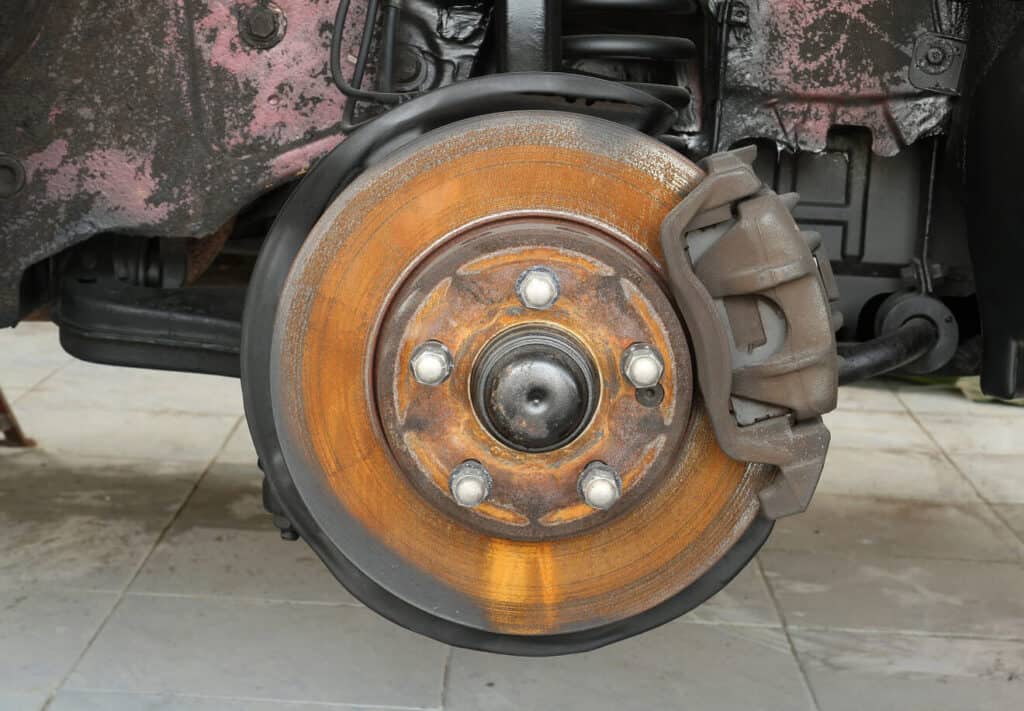The brake system plays a pivotal role when driving, with the brake calipers being a critical component of this system. When functioning properly, brake calipers apply the necessary pressure to the brake pads, creating friction against the brake rotors to slow down or stop your vehicle. However, when a brake caliper is faulty, its ability to perform this crucial task is compromised, leading to a multitude of potential risks and consequences. This article aims to shed light on the dangers of driving with a bad brake caliper, the signs of brake caliper wear and tear, and the importance of timely maintenance and repair.
Understanding the Risks: Can You Drive with a Bad Brake Caliper?
In the world of automobiles, the question often arises, “Can you drive with a bad brake caliper?” While the straightforward answer is yes, it’s possible, it is definitely not advisable or safe. Brake calipers play a pivotal role in your vehicle’s braking system. They apply the pressure needed to squeeze the brake pads against your brake rotors, ultimately slowing down or stopping your vehicle. When the caliper is faulty, its ability to execute this task is hindered, leading to a multitude of issues.
A malfunctioning brake caliper can compromise your vehicle’s braking performance, reducing your ability to slow down or stop quickly and efficiently. This can make driving hazardous, particularly in conditions requiring sudden braking. The risk multiplies in wet or icy conditions, where the inability to brake correctly can easily lead to collisions.

Further, a defective brake caliper can cause your vehicle to pull to one side when braking. This uneven braking force not only wears your tires unevenly but can also make controlling your vehicle more difficult, especially at high speeds or during sharp turns.
In severe cases, a bad brake caliper can lead to complete brake failure. This can be a particularly dangerous situation, resulting in serious accidents, particularly when driving at high speeds. Therefore, while you may be able to drive with a bad brake caliper, the associated risks make it a choice that should be avoided.
The Unseen Danger: What Happens When a Brake Caliper Goes Bad
When a brake caliper goes bad, the effects are not just limited to the braking performance. A faulty brake caliper can result in several collateral issues that can have far-reaching consequences on your vehicle’s overall performance and longevity.
A malfunctioning brake caliper can lead to excessive and uneven wear on your brake pads. This not only reduces the brake pads’ lifespan but can also affect your vehicle’s braking efficiency, safety, and performance. In extreme cases, the brake pads can wear down to the point where the caliper comes in direct contact with the rotor, causing severe damage and necessitating costly repairs.
Overheating is another concern when dealing with a sticking or dragging brake caliper. The constant friction caused by the stuck caliper can generate excessive heat. This heat can warp the brake rotors, leading to uneven braking. The heat can also cause damage to the brake pads, making them less effective and requiring premature replacement.
In the worst-case scenario, a faulty brake caliper can cause your brakes to fail completely. This is the most dangerous consequence of a bad brake caliper and can lead to serious, even fatal, accidents.
Temporary Fixes: How to Deal with a Stuck Brake Caliper
While a bad brake caliper requires professional attention, you might find yourself in a situation where you can’t immediately reach a mechanic. In such cases, there are a few temporary fixes you can try. However, it’s important to remember these are temporary and do not replace the need for a proper repair or replacement.
One potential solution is tapping the caliper gently with a rubber mallet or hammer. This can sometimes help to free up the caliper, allowing it to release. Another option is applying a high-temperature brake lubricant to the brake caliper. This can help reduce the friction and might help the caliper release.
These temporary fixes can help you in a pinch but should not be relied upon as a permanent solution. Driving with a malfunctioning brake caliper is not safe, and you should consult a professional mechanic for a proper diagnosis and repair as soon as possible.
Pushing the Limits: How Long Can You Drive with a Seized Caliper?
Driving with a seized caliper is not only risky but can also cause further damage to your vehicle. The length of time you can continue to drive with a faulty caliper can vary depending on the severity of the issue. However, it’s recommended to have it fixed as soon as you notice a problem.
As you continue to drive with a bad caliper, the constant friction and heat can cause extensive damage to other components of your braking system, such as the brake pads and rotors. This can lead to more severe issues and more costly repairs in the long run.
In addition to the potential damage to your vehicle, there are also legal implications to consider. Depending on your location, driving with a faulty brake system may be illegal and could result in fines or penalties.
Feeling the Difference: Recognizing the Symptoms of a Stuck or Dragging Brake Caliper
A brake caliper that’s stuck or dragging will produce some noticeable symptoms. One of the most apparent signs is a pulling sensation when you brake. This happens because the faulty caliper applies uneven pressure to the brake pads, causing the vehicle to pull to one side.
Other symptoms include decreased fuel efficiency due to the constant friction and resistance from the stuck caliper. You might also notice abnormal noises when braking, such as squeaking, squealing, or grinding sounds.
Excessive heat coming from the wheel area is another sign of a potentially faulty brake caliper. The constant friction between the caliper and rotor can generate excessive heat, which can be felt near the wheel area and sometimes even causes a burning smell.
If you notice any of these symptoms, it’s crucial to get your vehicle inspected by a professional immediately. Ignoring these signs can lead to more severe issues, more costly repairs, and even dangerous driving conditions.

Preventing Caliper Issues: Understanding What Causes a Brake Caliper to Not Release and How to Avoid It
There are several factors that can lead to a brake caliper not releasing. Some common causes include a buildup of rust or dirt, a lack of lubrication, or worn-out components.
To prevent brake caliper issues, regular maintenance of your braking system is key. This includes regular cleaning to remove dirt and rust, applying brake lubricant to reduce friction and prevent sticking, and replacing worn-out parts as necessary.
In addition to regular maintenance, driving habits can also impact the longevity of your brake calipers. Avoiding harsh braking and not overloading your vehicle can help reduce stress and wear on your brake calipers.
Conclusion
Driving with a bad brake caliper is a risk that’s not worth taking. Not only can it compromise your safety and the safety of others on the road, but it can also lead to significant damage to your vehicle. By recognizing the symptoms of a bad brake caliper and taking preventative measures, you can keep your braking system in good working order, maintaining the safety and performance of your vehicle. Always remember that when it comes to brake calipers, or any component of your vehicle’s braking system, professional inspection and maintenance are essential.
